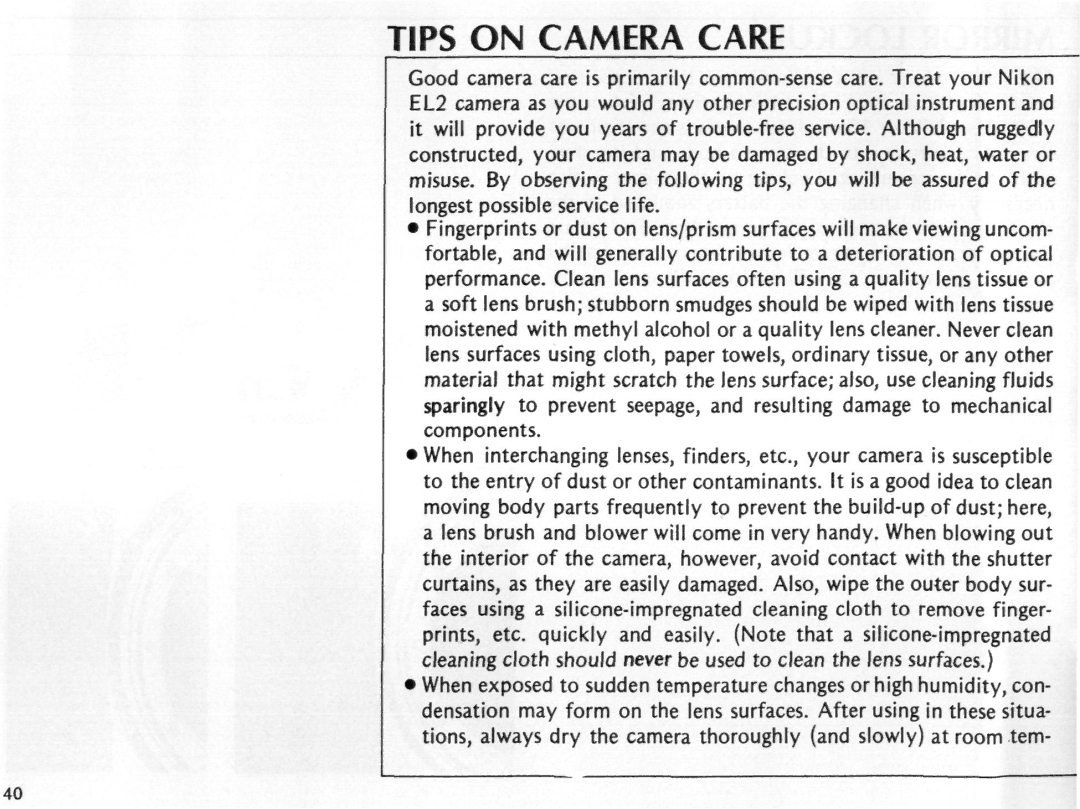
TIPS ON CAMERA CARE
Good camera care is primarily
•Fingerprints or dust on lens/prism surfaces will make viewing uncom- fortable, and will generally contribute to a deterioration of optical performance. Clean lens surfaces often using a quality lens tissue or a soft lens brush; stubborn smudges should be wiped with lens tissue moistened with methyl alcohol or a quality lens cleaner. Never clean lens surfaces using cloth, paper towels, ordinary tissue, or any other material that might scratch the lens surface; also, use cleaning fluids sparingly to prevent seepage, and resulting damage to mechanical components.
•When interchanging lenses, finders, etc., your camera is susceptible to the entry of dust or other contaminants. It is a good idea to clean moving body parts frequently to prevent the
•When exposed to sudden temperature changes or high humidity, con- densation may form on the lens surfaces. After using in these situa- tions, always dry the camera thoroughly (and slowly) at room tern-
